Blog •
Posted on Sep 18, 2023
Finding Your Feet as a Freelance Illustrator: Interview With a Reedsy Professional
About the author
Reedsy's editorial team is a diverse group of industry experts devoted to helping authors write and publish beautiful books.
More about the Reedsy Editorial Team →Linnea Gradin
The editor-in-chief of the Reedsy Freelancer blog, Linnea is a writer and marketer with a degree from the University of Cambridge. Her focus is to provide aspiring editors and book designers with the resources to further their careers.
View profile →
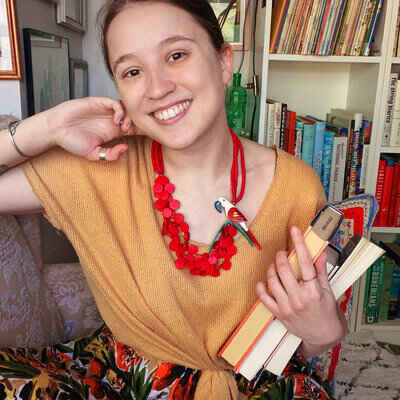 Forever finding inspiration in National Parks, Caitlin B. Alexander is an illustrator originally from Austin, Texas and newly settled in Manitou Springs, Colorado. Her work focuses on a representation of repeat patterns, color and texture in our natural world, observations of daily life, and messages of strength and acceptance, via hand-lettered typography. Some additional subjects and topics she frequently illustrates are books, cats, social activism, plants, and people.
Forever finding inspiration in National Parks, Caitlin B. Alexander is an illustrator originally from Austin, Texas and newly settled in Manitou Springs, Colorado. Her work focuses on a representation of repeat patterns, color and texture in our natural world, observations of daily life, and messages of strength and acceptance, via hand-lettered typography. Some additional subjects and topics she frequently illustrates are books, cats, social activism, plants, and people.
Finding your feet and carving out a space for yourself in the creative field can be difficult, and the realities of what it’s like working in publishing is often shrouded in mystery. To shed some light on how to get your feet through the door and establish yourself as a freelance illustrator, we checked in with one of Reedsy’s top professionals — Caitlin B. Alexander — to see how she got her start, how she turned freelance, and what her experience working with clients directly through Reedsy has been like.
Let’s dive in.
Starting out as an illustrator
Q: What do you need to know to work as an illustrator in publishing?
Suggested answer
Success in publishing illustration requires a unique blend of creative and technical knowledge. Understanding standard publishing formats, color spaces (CMYK vs RGB), resolution requirements, and file preparation for both print and digital formats is essential. Additionally, familiarity with industry-standard software and modern AI tools is crucial for meeting current market demands.
Beyond technical skills, it's vital to understand the business side of publishing. This includes knowledge of licensing rights, contract terms, standard pricing structures, and project timelines. I've found that understanding marketing principles and how covers function as marketing tools is equally important as artistic ability.
Another crucial aspect is developing strong project management skills and professional communication habits. Meeting deadlines, handling revisions efficiently, and maintaining clear communication with clients are as important as creative talents. It's also essential to stay current with publishing trends and continuously expand your understanding of different genres and target audiences.
Sergey is available to hire on Reedsy ⏺
How did you get into illustration and design?
I can’t recall a time when art wasn’t going to be my future. I focused on it in high school, taking Advanced Placement art classes, entering statewide competitions, and attending summer programs. At that point, I wasn’t sure what type of art I wanted to pursue, but upon entering college, I quickly declared Illustration as my major at the Savannah College of Art and Design. I wanted to draw and paint, but hoped for it to serve a functional purpose that impacted people’s lives more directly than fine art.
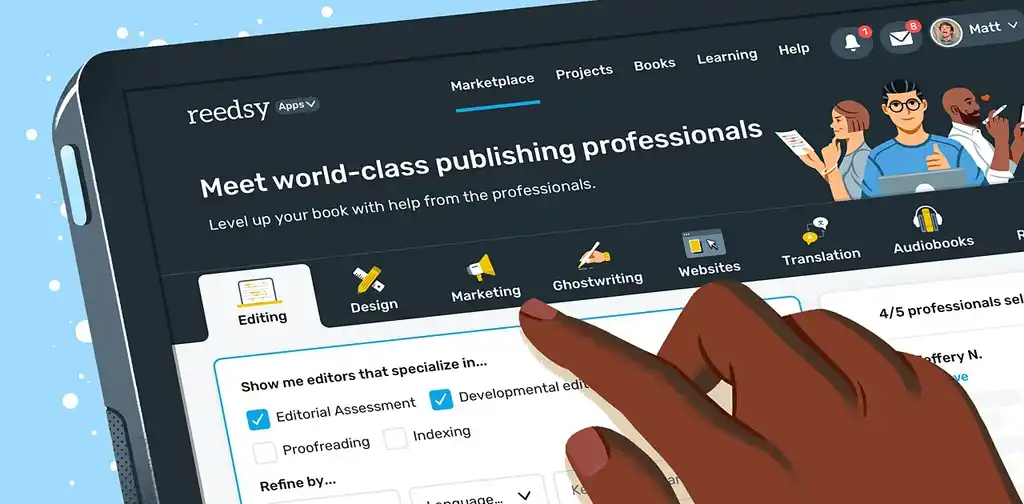
JOIN OUR NETWORK
Supercharge your freelance career
Find projects, set your own rates, and get free resources for growing your business.
How did you develop your style?
During my time in college, I was introduced to a lot of mediums, art history, and techniques — and I came away with an appreciation for gouache paint and mid-century design. Over time, the use of traditional media gave way to digital painting, which allowed for more detail and color, but still utilized a similarly dry, flat brush and color.
After some personal life upheavals in 2016, I stopped boxing myself into one aesthetic and experimented with a more realistic style (still stylized, but less so) for landscape work and built upon that midcentury influence into the style you see me use today.
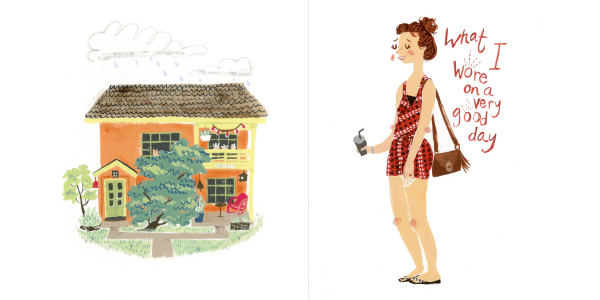
Early work in gouache.
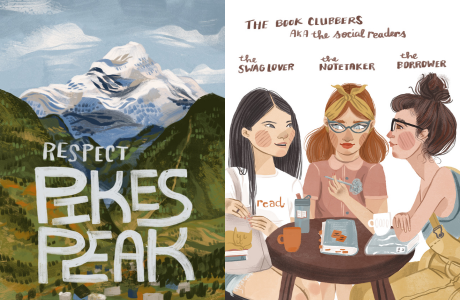
Q: How did you first develop your style in illustration?
Suggested answer
My illustration style evolved through a deliberate process of experimentation and synthesis. I began by studying various artistic styles and techniques, both traditional and digital, while paying careful attention to what resonated most strongly with book cover design trends and market demands. The integration of AI tools into my workflow opened new possibilities for experimentation while maintaining artistic authenticity.
Rather than limiting myself to a single style, I developed a flexible approach that can adapt to different genres and author needs while maintaining consistent quality and professionalism. This involved countless hours of practice, analyzing successful cover designs, and refining my technique based on client feedback and market response.
The key breakthrough came when I started focusing on emotional impact rather than technical perfection. I learned to combine technical precision with artistic intuition, using both AI and traditional techniques to create illustrations that not only look professional but also forge an emotional connection with viewers. This balance has become a hallmark of my work.
Sergey is available to hire on Reedsy ⏺
I let my preferred drawing and painting techniques dictate most of my illustration style. My sketches are detailed, but loose, so I gravitate to styles that don't rely on careful linework for cover illustration. I have always loved dramatic lighting and its use as a narrative element, so instead of flat graphic-style illustrations, my illustrations are sculpturally rendered to showcase lighting effects.
Candice is available to hire on Reedsy ⏺
What inspires your work?
I’m forever looking for inspiration in our National Parks, finding the beauty of repeat patterns, color and texture in our natural world. My work also focuses on observations of daily life, with cozy little details such as books, plants, cats, people, quilts, and more, often finding their way into the art.
Turning to freelance illustration
How did you start your freelancing career?
After graduating, it took a few years for me to build a freelance career but I stubbornly continued to take one baby step after another. After working some unrelated placeholder jobs, I finally started working two part-time creative jobs — one in a screen printing shop and one designing t-shirts remotely.
That allowed me to simultaneously work on promoting my illustration and build up a portfolio of work to showcase. I slowly got more and more gigs until I could make the leap into full-time freelance illustration. I also made connections locally through the screen-printing shop, which allowed me to eventually sell my work around Austin, where I lived at the time.
How did you start working on book projects?
My first book project was a Kickstarter picture book about climate change called Cool For You, written by climate scientist Marianna Linz, who cared deeply about reaching future generations and not just adults. It was a passion project for both of us and I loved the collaborative process we went through, from start to finish. Climate activism is important to me, and it was wonderful to be able to use my skill set in an impactful way.
Free course:Crowdfunding Your Next Book
Learn how crowdfunding works for your next publishing project
What are some challenges of working as a freelance illustrator?
The inconsistency is always going to be the hardest part of freelancing, because some months are insanely busy and some months are slow, which is reflected in your income, and you have to be mindful of the overall average.
What are some of the opportunities/benefits of working as a freelance illustrator?
I love the freedom that comes with being a freelance illustrator. I get to make my own schedule, choose my own clients, and structure my own workflow. Working from home, nobody is checking over my shoulder, and as long as I'm structured and responsible with meeting deadlines, it doesn't matter what my day looks like.
Getting to choose projects that align with my personal interests, beliefs and goals is also something I've grown to appreciate more and more, over my years in this field. It's really fulfilling to work with clients that I have some foundation in common with.
Q: What are the perks of working as an illustrator via Reedsy?
Suggested answer
For me it's the security and support they provide. Both the Client and Service provider are protected. The other thing for me is, Reedsy understands realistic fees for service providers. This is vital to build a freelance career. The quality of clients I've worked with has been very high, and I think this is because they understand the level of skill they are receiving.
Rich is available to hire on Reedsy ⏺
What would you recommend to artists looking to make it as a freelance illustrator?
I would say, be sure that you’re truly stubborn enough to keep pursuing this career, even when you’re being ghosted and keep getting told “no.” You have to plant seeds and understand that you won’t see the fruit from them for a while. It’s all about maneuvering through the field with a clear perspective and finding opportunities where maybe most people wouldn’t see them.
For more inspiration on how to start your freelance career, we’ve put together a checklist to make sure you have all your ducks in a row:
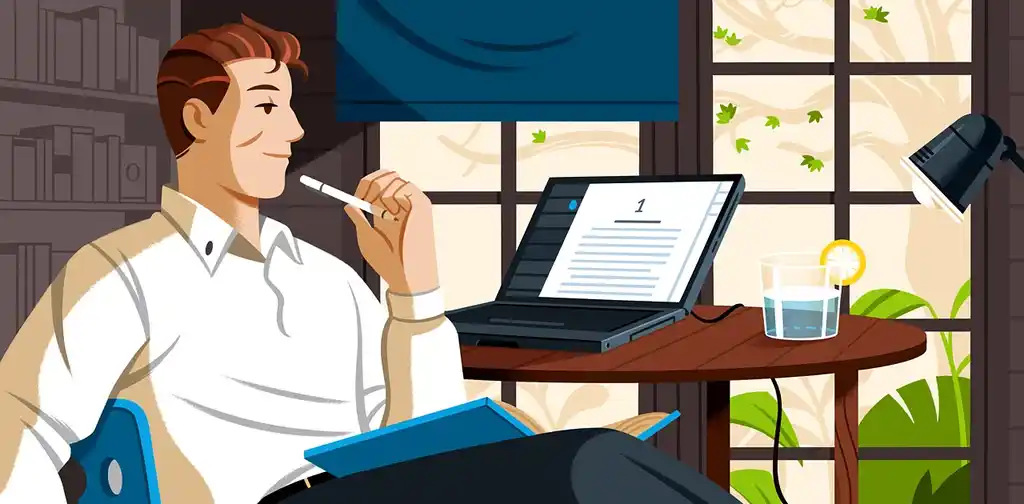
FREE RESOURCE
The Full-Time Freelancer's Checklist
Get our guide to financial and logistical planning. Then, claim your independence.
Freelancing with Reedsy
Why did you join Reedsy?
I love working on book projects, as an avid reader myself. A huge part of the fun of visiting a bookstore is admiring all of the book cover art that brings books to life! And, generally, across the board, the traditional publishing world has a lot of closed doors. I wanted to be a part of a more accessible publishing community, especially as things continue to shift and self-publishing becomes more and more favorable.
What helps you get new projects and the type of projects you’re looking for on Reedsy?
Communication is key! I always want to be sure that the client is looking for an artist with my style of illustration, rather than forcing a project that doesn’t quite fit. That way, we can always be sure that the result is going to be a good one that all parties are happy with. I also only work on projects that align with my personal values, so I have a few boundaries surrounding inclusivity and equality.
💗 Want to learn more about how to only get projects you love? Check out Colleen Sheehan’s story.
Who are your clients?
My clients are authors that understand the value of bringing their words to life even further, through eye-catching design or visual storytelling. They have the confidence to trust my expertise but also want to participate in the process.
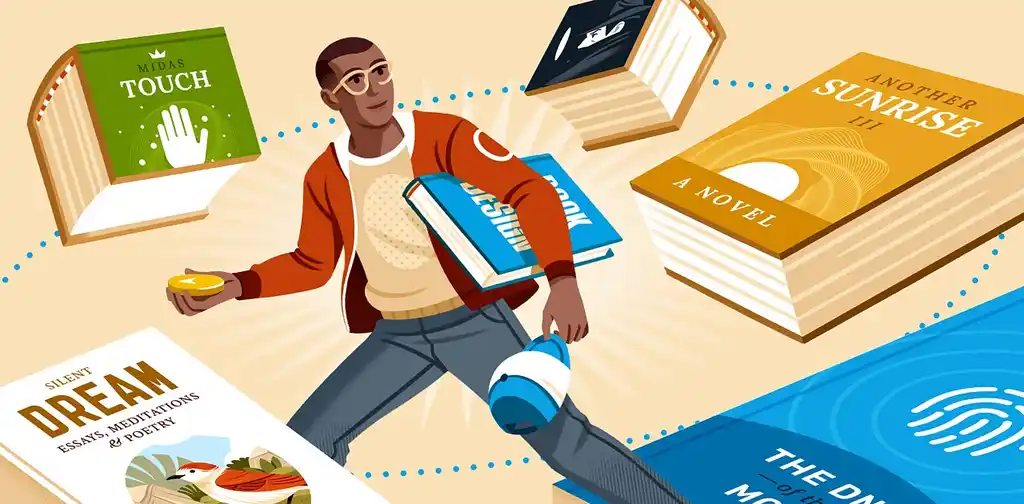
JOIN REEDSY
Find exciting new projects
We connect publishing professionals with our community of 1,500,000 authors.
How many of your clients come from Reedsy?
Reedsy is currently a very large portion of my client base, which was something that shifted during COVID. I used to do a lot of local work when I was located in Austin, before the pandemic. But Reedsy really saved my career as everything shut down, including those local opportunities. At that point, I leaned into freelancing online more.
I've since moved to Manitou Springs, Colorado and am working on getting into local networking again, but Reedsy really has been the backbone of my freelance career for quite a few years now and I imagine it'll be staying that way for the foreseeable future, too.
If you’re curious about how Reedsy selects its professionals and are interested in joining, check out our selection criteria here.
Working with freelance clients
What has your experience working directly with authors been like?
I have really enjoyed it! Most of the authors I work with are passionate about having a certain mood or character represented in specific ways, and I love that aspect of collaborating, which wouldn’t happen in traditional publishing.
For the most part, authors trust my expertise and don’t “micromanage” the project too much, which I know is often the concern of publishing houses and a reason for the middle-man art director. I have been so pleasantly surprised to not have that issue come up very often. Most of my clients and I have a great working relationship of mutual respect and that balance is the key to a successful cover in the end.
Free course: Self-Publishing vs. Traditional Publishing
Learn about the differences between the two biggest forms of publishing
How much creative guidance do clients usually give you?
It varies by the project, but generally, the most successful covers are with authors that know a vague idea of what they want represented on the cover. A character, maybe? Or a visual metaphor? Perhaps just a focus on the hand-lettered title?
They know that details like composition, color palettes, the style in which things are painted, etc, are best left up to the artist. And of course, I always provide sketch options and revisions, so the process is collaborative from start to finish.
What's the process of collaborating with an author like for you?
After we have agreed upon pricing, deadline, and I have received their cover template (for which the length of the manuscript must be finalized with no additional editing to the writing, so the spine width is correct — I always emphasize this!) then we discuss the cover details.
First we look at inspirations. I make sure to have my author describe what they like from both published works and my own portfolio, to be certain we are seeing the same things. Then, we brainstorm ideas and from there, I sketch options. Sometimes these options vary in subject matter, and sometimes it’s just compositional options of the same concept, depending on how much we narrowed it down in conversation previously.
Q: Where do you go to for inspiration on illustration projects?
Suggested answer
The manuscript serves as my primary source of inspiration. The characters, locations, and plot all influence the choices I make as an illustrator. A story filled with fun might suggest the use of bright colors, while a narrative centered on loss or grief may require soft, muted tones. If the setting is a jungle, a green palette would be fitting, whereas a story set in the city might demand tall buildings.
As I read through each manuscript, I take notes. My vision for the illustrations is shaped by my personal experiences. As a children's book illustrator, I tap into my childhood memories to visualize each page, which may differ from the author's own experiences. This is where the author’s vision and my vision as an illustrator merge, creating something greater than ourselves.
At some point, I have to sit down and start working. For instance, if the story is about a child dreaming of flying to the moon, I’ll explore various picture books on similar themes. I examine the colors they use and how they represent space and rocket ships. If you don’t have an extensive picture book library, you can visit websites that showcase other illustrators’ work. When I first began, I maintained a large library of reference material, tearing out images from magazines and organizing them in folders within a filing cabinet. This has since evolved to using Google image searches. Recently, I've relied less on Google as more search results are AI-generated.
Many artists find inspiration by keeping sketchbooks, they sit in a park to sketch what they see each day. This practice sharpens your observational skills, which you then bring into your illustrations.
Ultimately, artists are great collectors. We examine the work of other illustrators, observe the world around us, and repurpose those images into something new.
What inspires me may not inspire you. I know illustrators who find motivation in art galleries or through travel. Personally, I enjoy watching movies and taking note of how directors frame their scenes. Illustrating a picture book is much like storyboarding a movie, so I pay attention to the different camera angles they use and consider how I can apply that knowledge to my next project.
I hope this helps
Vaughan
Vaughan is available to hire on Reedsy ⏺
I find resources such as Pintrest to be hugely helpful. I can file away reference and inspiration in folders relevant to each project. I also use googledrive to save images and screenshots from things I see. I also keep an extensive photo library from my travels.
My main expertise is Picture Books, So I keep a large collection (shared with my four year old) of books and refer to them often. This is a good way to learn how to make a picture book but I have to emphasise, not to copy, just for things such as composition ideas, how to use light and dark, how to place text etc, the technical stuff. As an Illustrator of many years, I have confidence to draw almost anything, this comes from experience, I know how to draw a subject, how to frame that across 28 pages is the tricky (but fun) part.
Rich is available to hire on Reedsy ⏺
My inspiration comes from a diverse range of sources that extend far beyond the publishing world. While I regularly study current book cover trends on platforms like Goodreads and Amazon, I also draw inspiration from classical art, contemporary photography, film posters, and even fashion design. This broad approach helps me bring fresh perspectives to book illustration.
I maintain an extensive digital library of visual references, regularly updating it with screenshots of interesting designs, color combinations, and compositional ideas. Social media platforms like Pinterest, Instagram, and ArtStation provide continuous inspiration, while also helping me stay current with emerging design trends and techniques.
Most importantly, I find inspiration in the stories themselves. Each manuscript provides unique opportunities for visual interpretation, and I often find that deeply understanding the author's narrative leads to the most innovative and effective cover designs.
Sergey is available to hire on Reedsy ⏺
Then, the author chooses a direction and either I provide an edited sketch or we move directly into color. After the final art is delivered, we have an editing stage for minor changes, and at that point, I send over a final files package which typically includes files for both web and print.
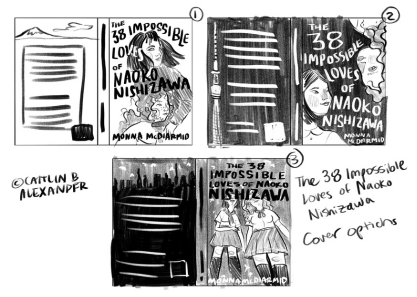
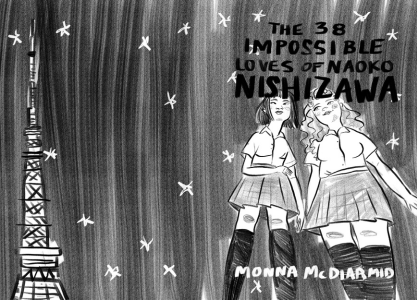

How do you continue to grow and develop as a freelance illustrator?
I think the key to continuing to grow not just as a freelance illustrator, but broadly as an artist, is to allow yourself to change over time. Many of us creatives tend to get into ruts — which is perfectly normal — but part of what keeps us stuck in them is the inclination to want to repeat successful eras of your work, even when it doesn't have authentic momentum anymore. It's okay to find new inspiration and it's okay for your style to change, and experimenting is important for finding that new chapter.
For more tips on how to become a freelancer in publishing, check out our freelancer blog and follow us on LinkedIn.
